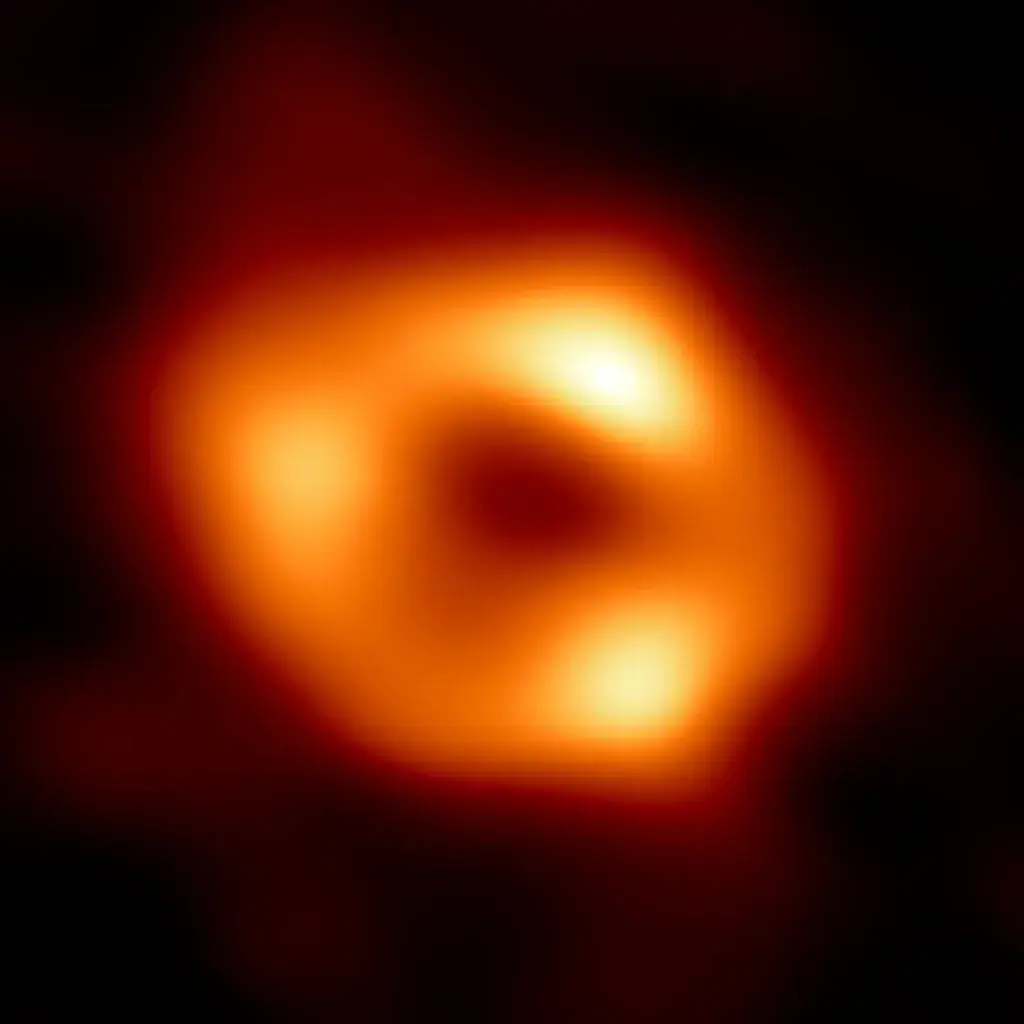First image of the black hole at the center of our galaxy Sagittarius A* (Sagittarius Ai Kochav) which until now has been studied for its effect on other stars, this time we can see its event horizon. Photographed by the Ofek Al-Havain partnership which connected eight radio observatories into one radio telescope the size of the Earth

Today (May 12, 2022), in simultaneous press conferences around the world, including at the European Southern Observatory (ESO) headquarters in Germany, astronomers unveiled the first image of the supermassive black hole at the center of our Milky Way galaxy. The mass of the black hole is more than 4 million solar masses.
This image provides conclusive evidence that the object is indeed a black hole and yields valuable clues about the workings of such giants, which are thought to be at the center of most galaxies. The image was produced by an international research team called the Event Horizon Partnership (EHT), using observations from a global network of radio telescopes.
The black hole is the huge object that resides in the center of the Milky Way galaxy - our galaxy. Scientists have previously seen stars orbiting something invisible, compact and very massive at the center of the Milky Way. Its location and size indicated that this object - known as Sagittarius A * (or Sgr A * for short, pronounced "sadge-ay-kochav" due to its location in the "Sagittarius group") - is a black hole, and the image revealed today provides the first direct visual evidence of this.
Although we can't see the black hole itself, because it's completely dark, glowing gas around it reveals a telltale signature: a dark central region (called a shadow) surrounded by a bright ring-like structure. The black hole captures and bends the light that reaches it.
This research was presented in six articles which were published today in the journal Astrophysical Letters.
So far, the "Event Horizon" team has managed to photograph another black hole twice using different techniques, first in 2017 and again in 2019. This is the black hole at the center of the galaxy M87, about 55 million light years from Earth.
More of the topic in Hayadan:
- ESO's Giant Telescope in Chile watched the star dance around the supermassive black hole at the center of the Milky Way; Proves that Einstein was right
- "Foreign" stars invade the Milky Way
- An interaction between a black hole and a star has revealed a new type of black hole

2 תגובות
A. It's amazing how many 4 million suns can be crammed into something so small
B. I think that although this is a second observation of a black hole, the image is a color image as an interpolation based on the radio radiation that was received. It's not that we really see in XNUMXD something bright and inside something black.
And at the same time, amazing. The most amazing thing is how tiny this bone is and how they managed to discover it
I was hoping that the image of the hole at the center of our galaxy would be clearer and more dramatic than the 2019 image of the black hole because it is significantly closer.
But the black hole from 2019 is more obvious.
Is it because the disk of gas around the black hole ends up being imaged and the 2019 black hole is more active and much more massive?